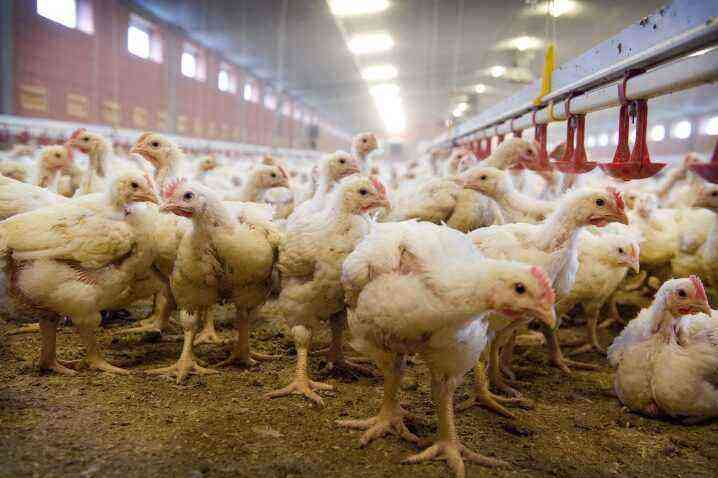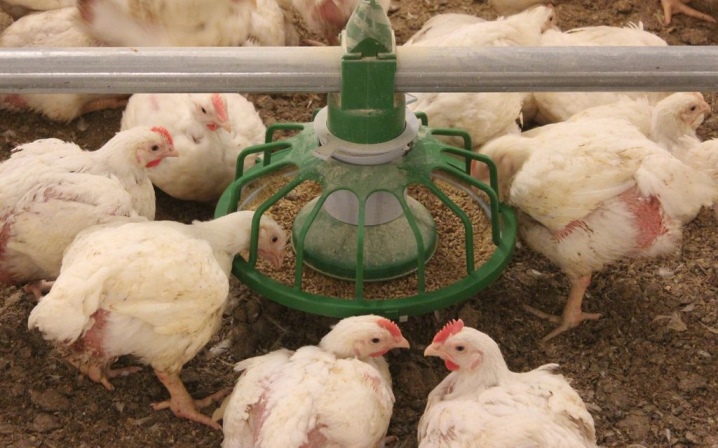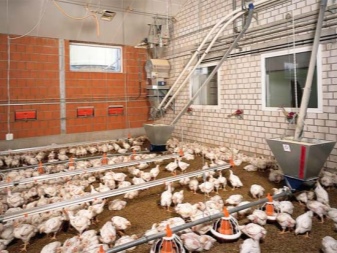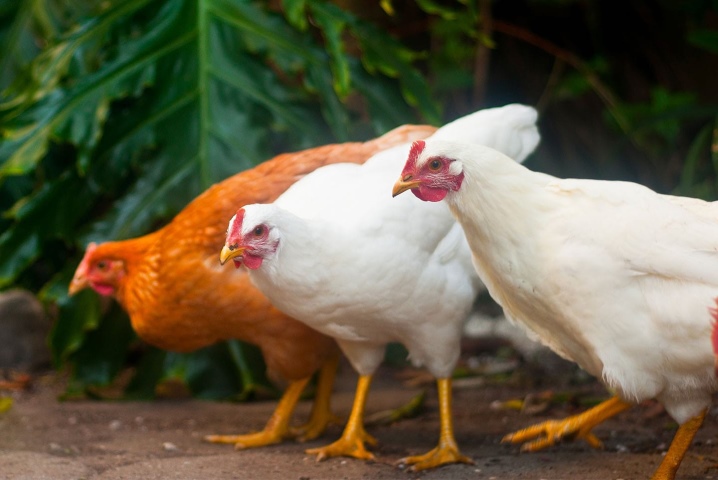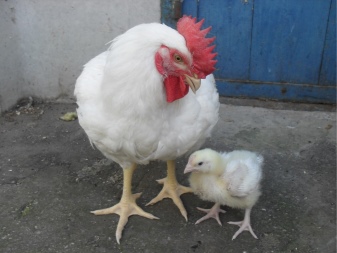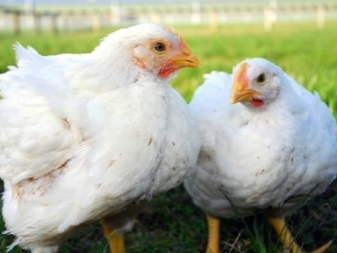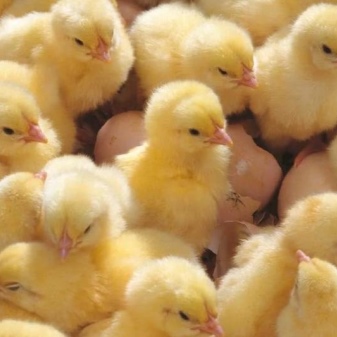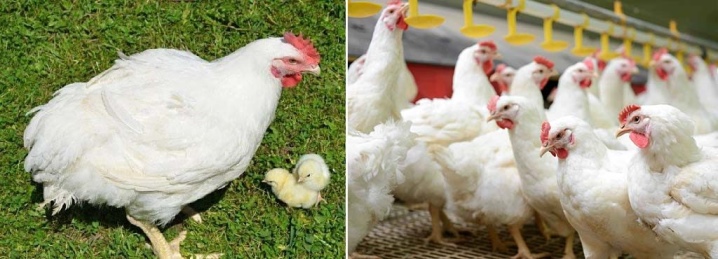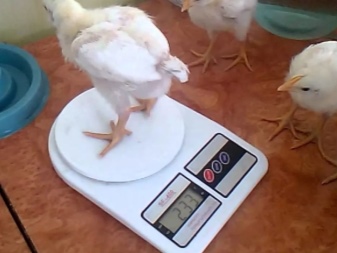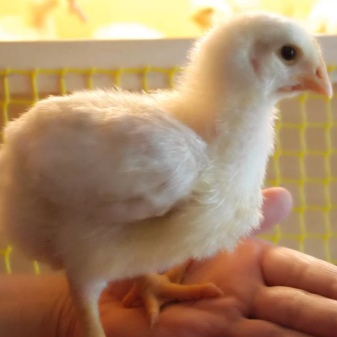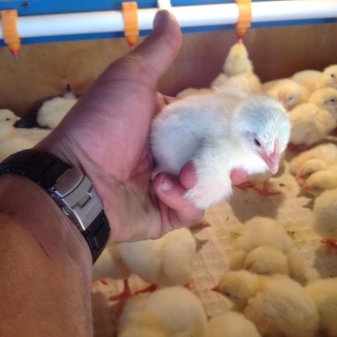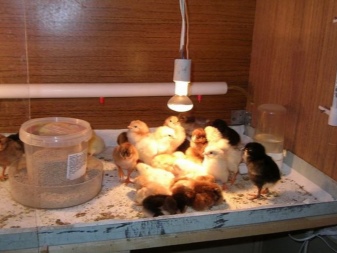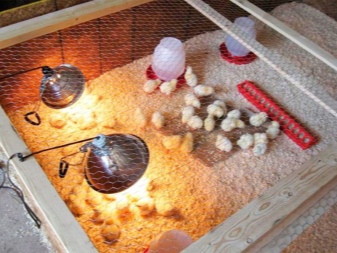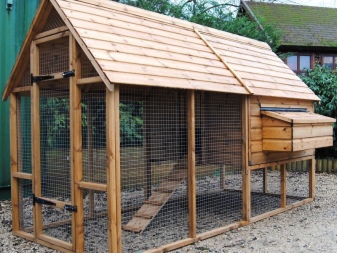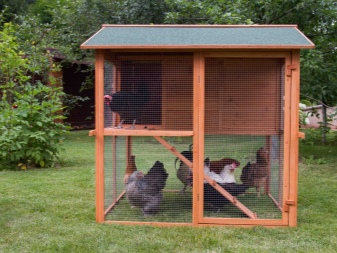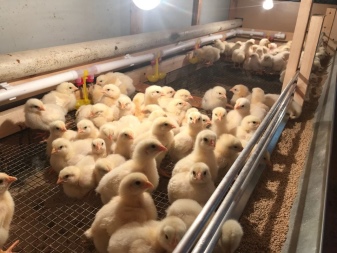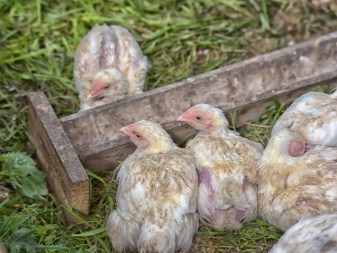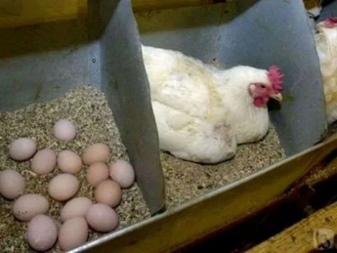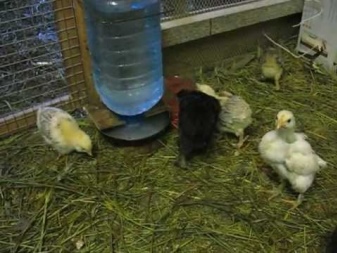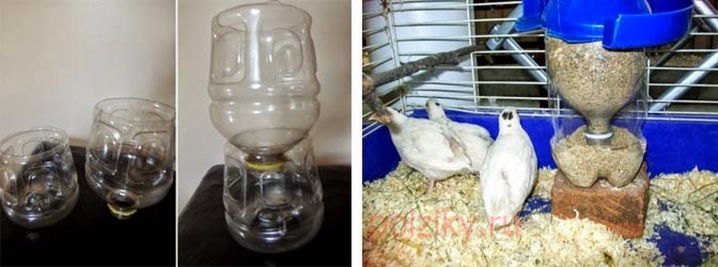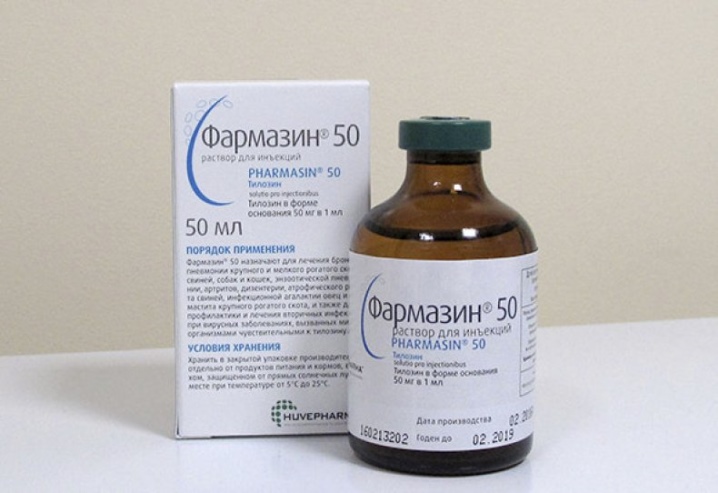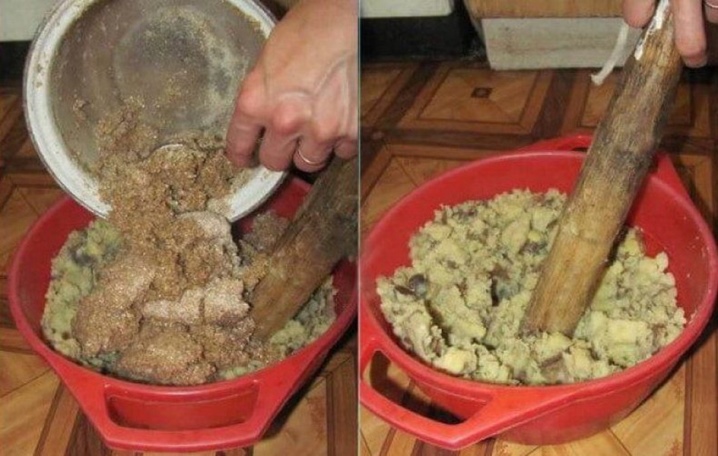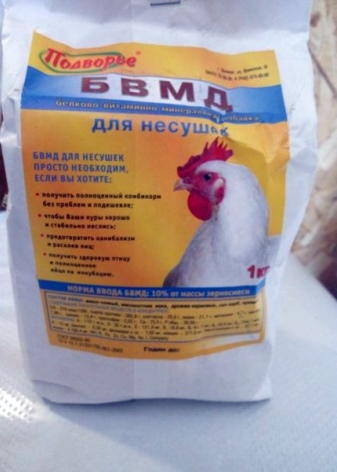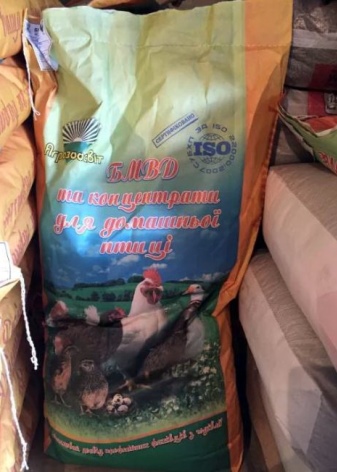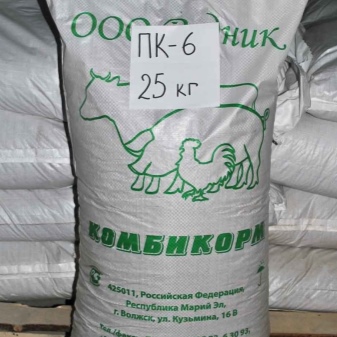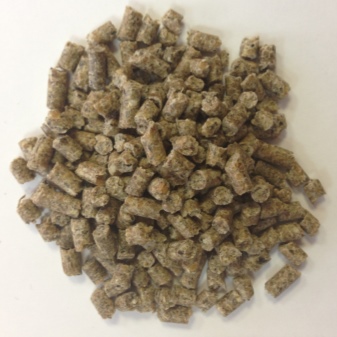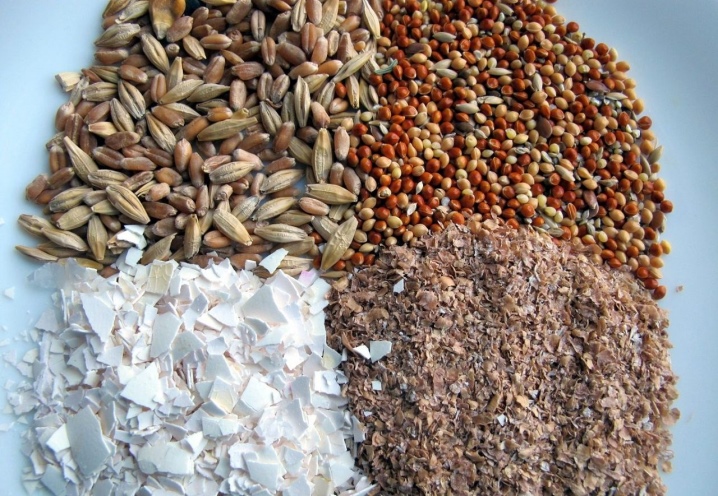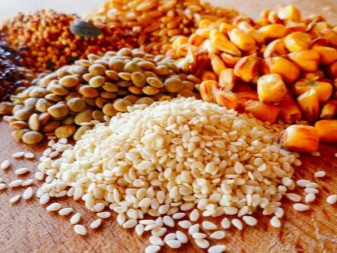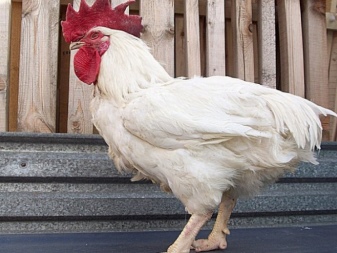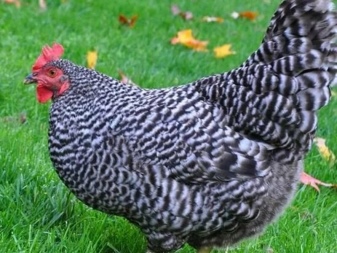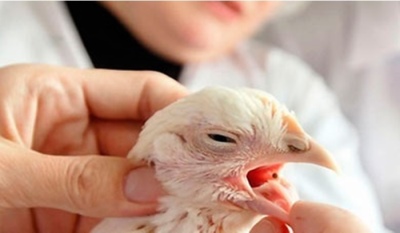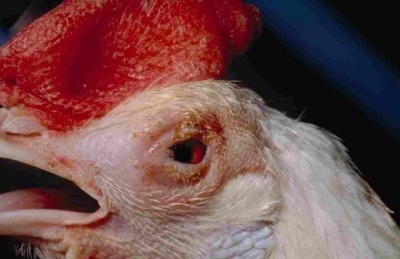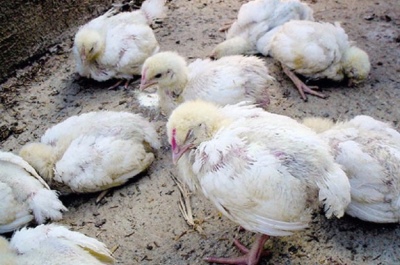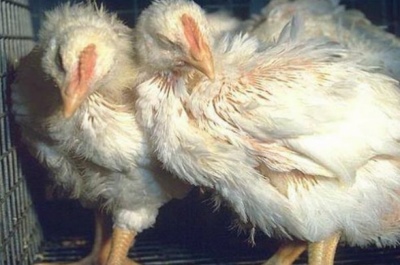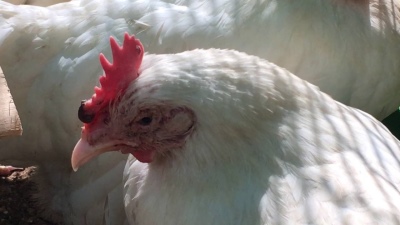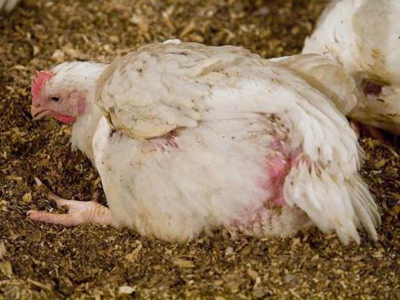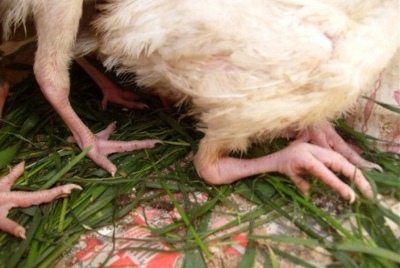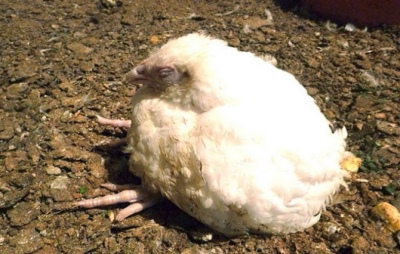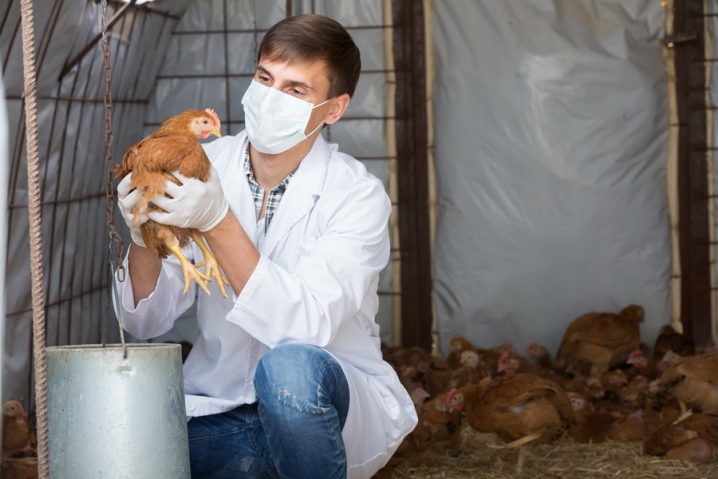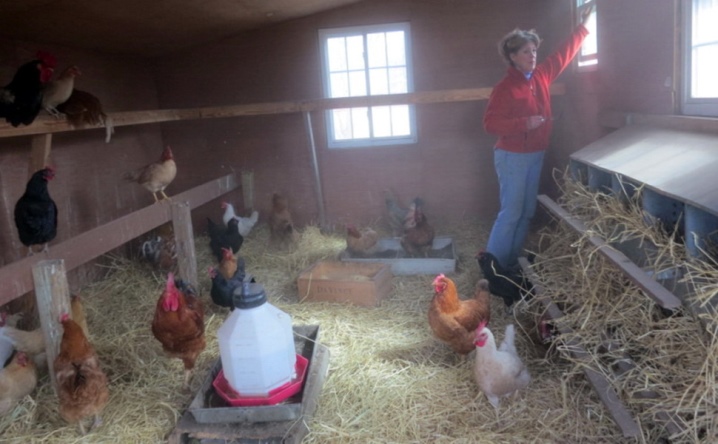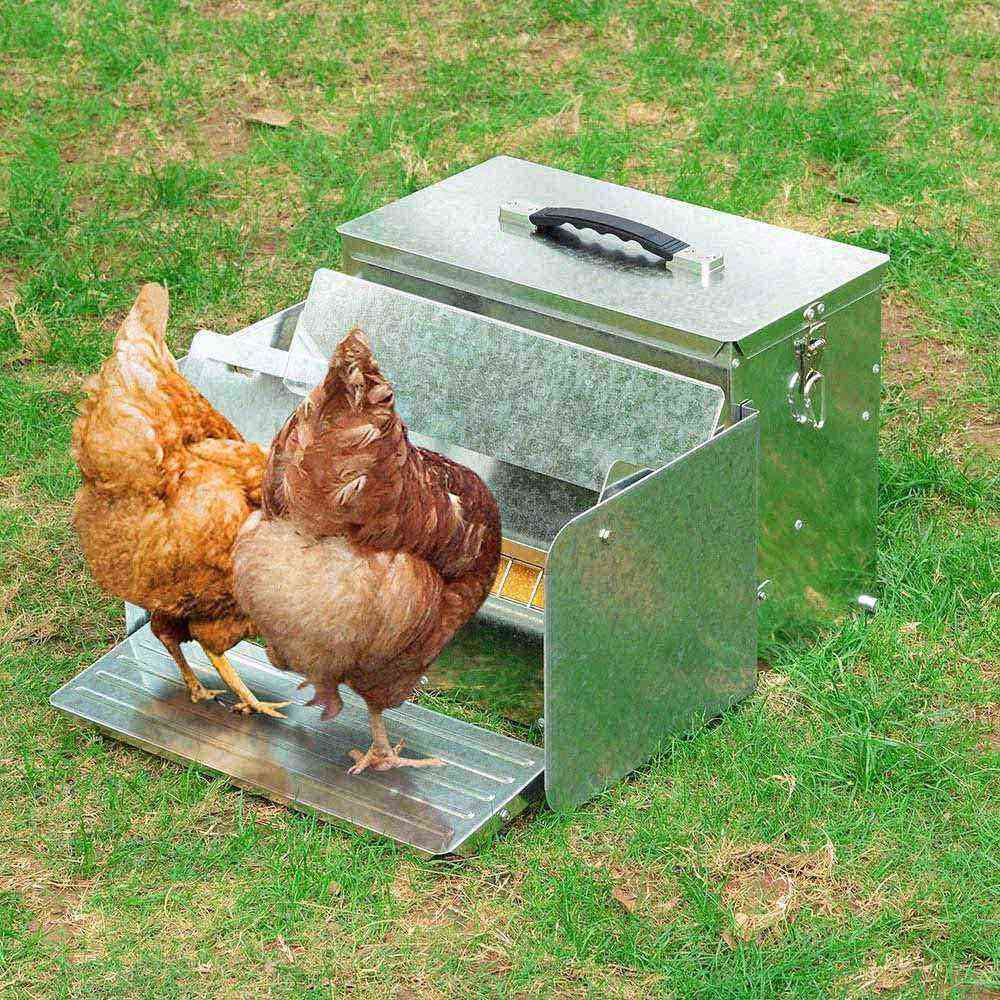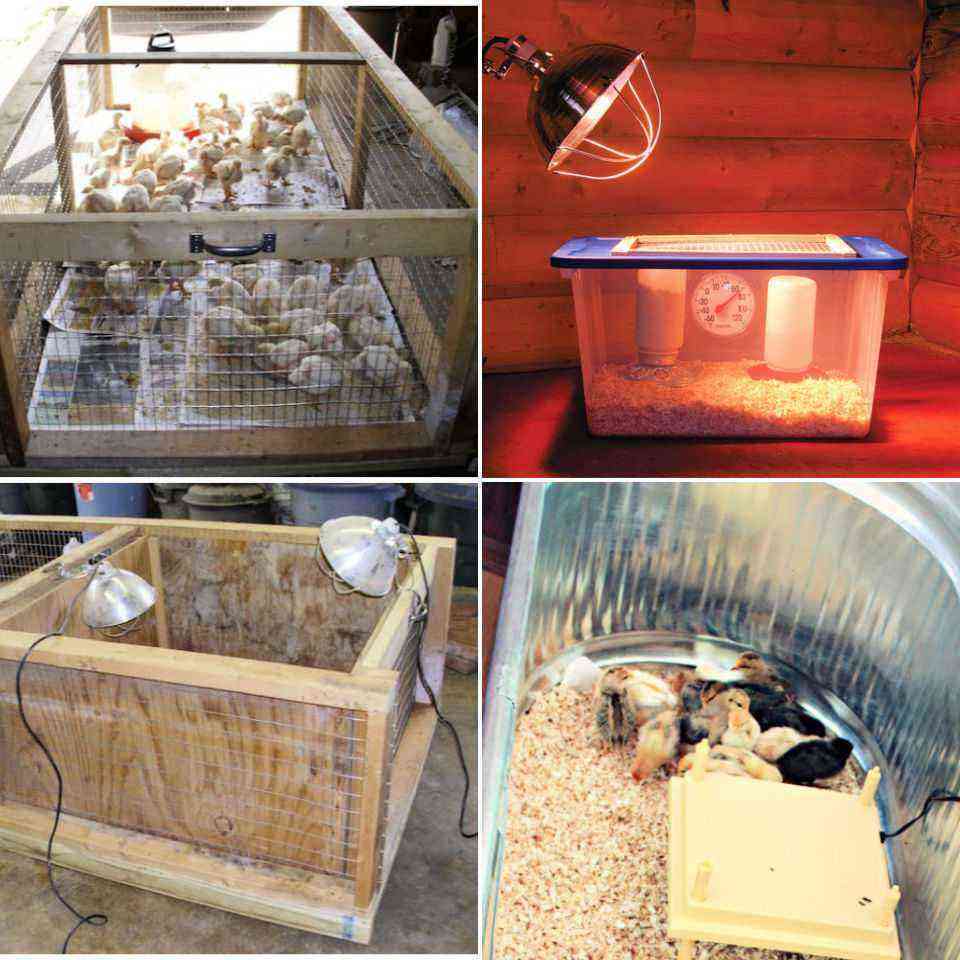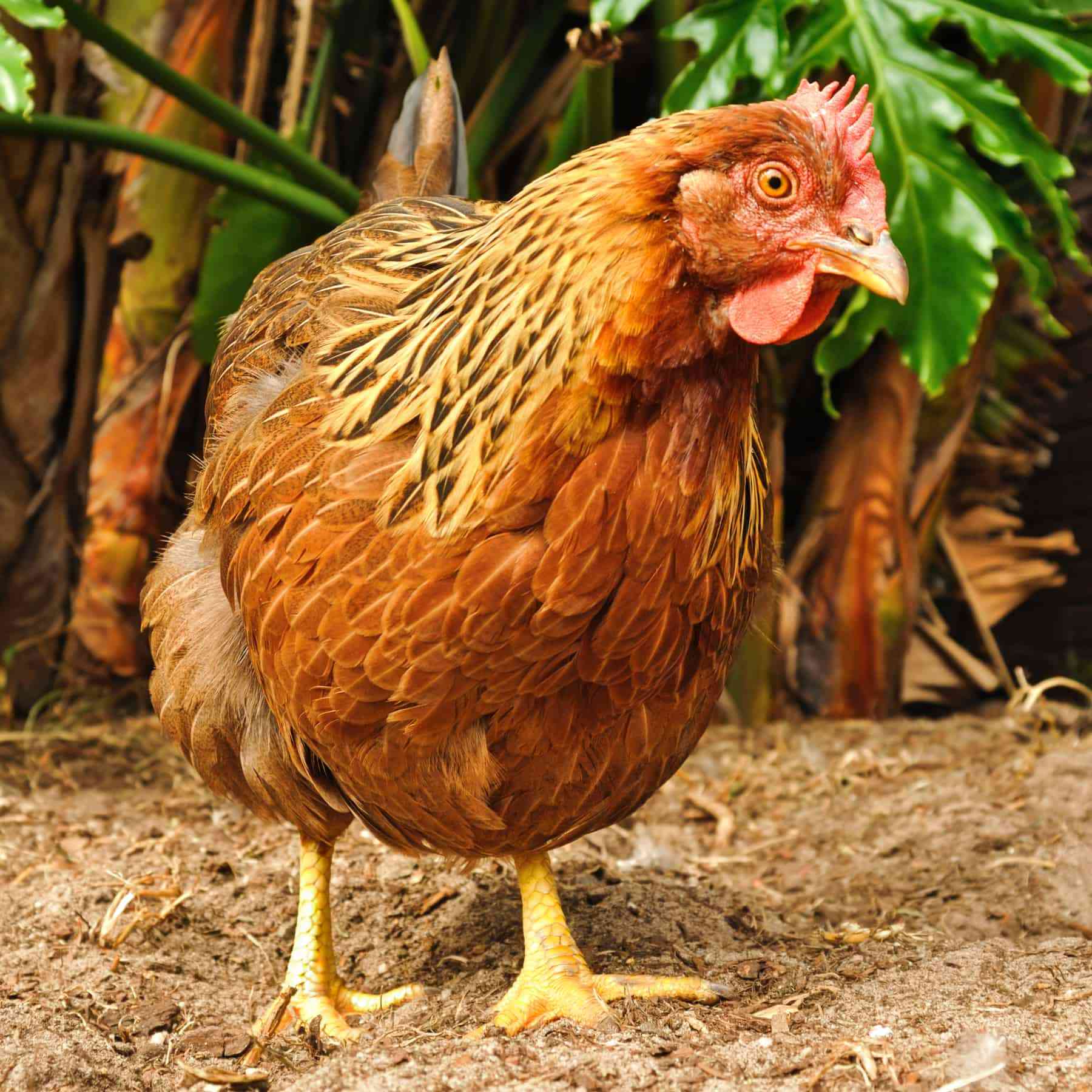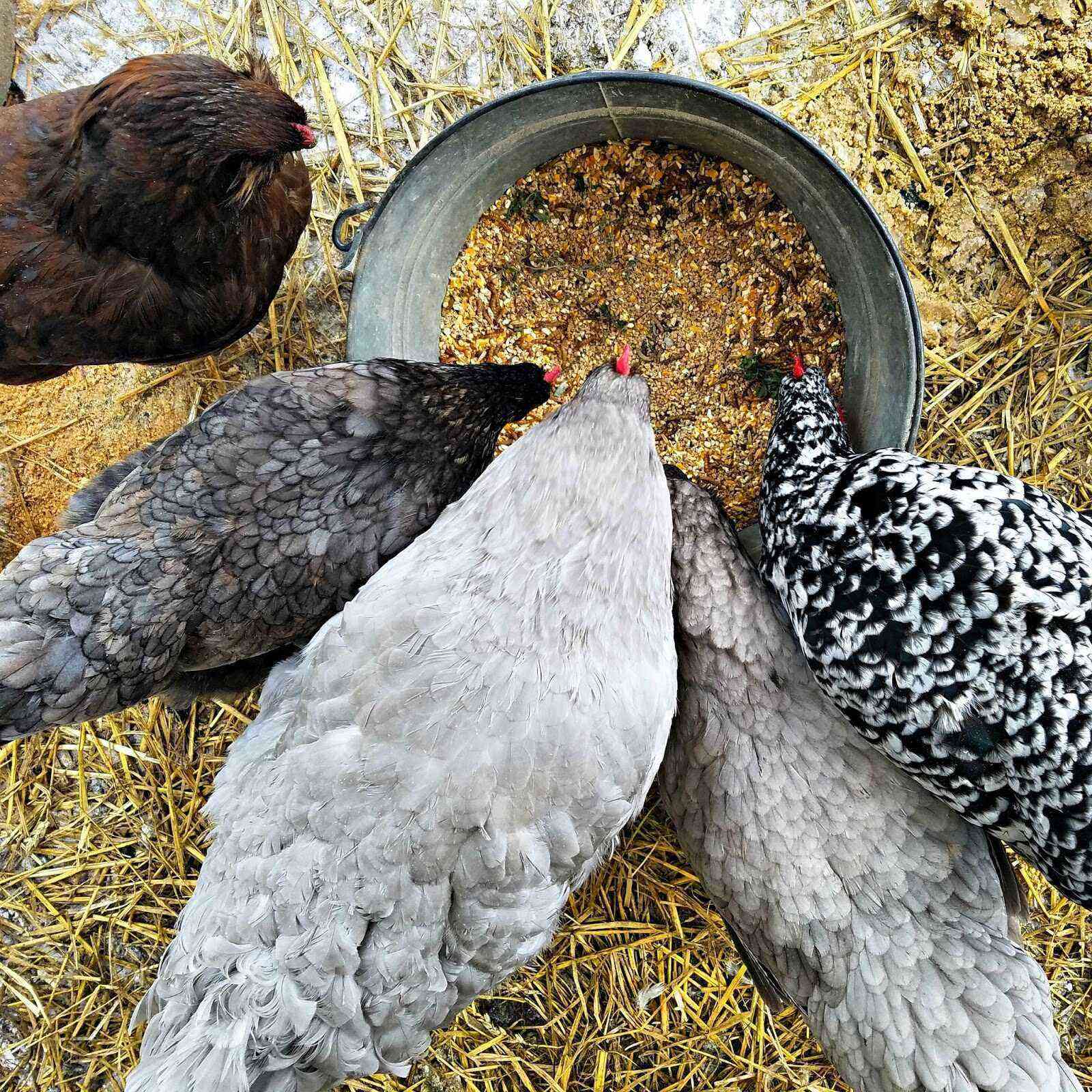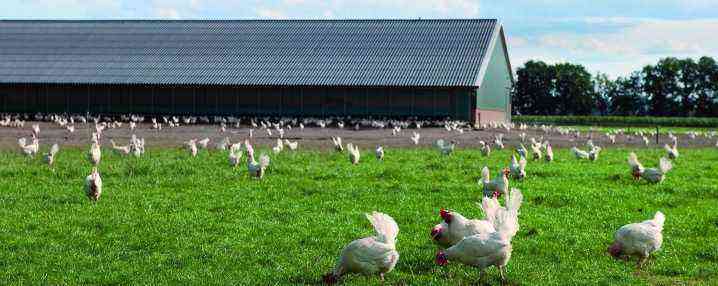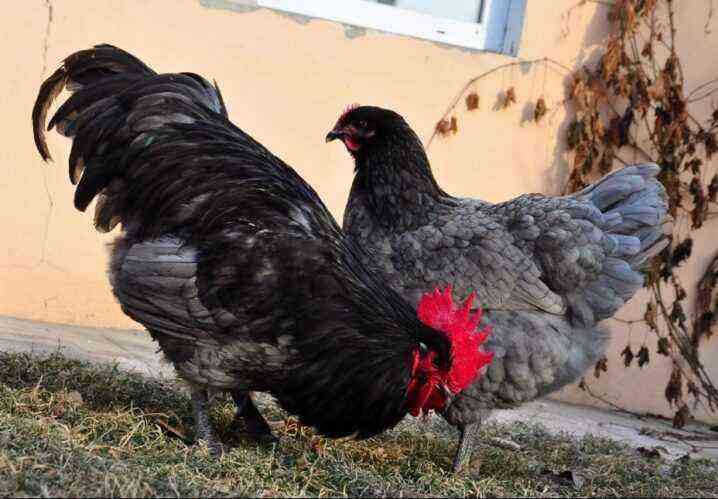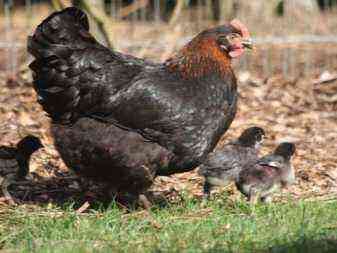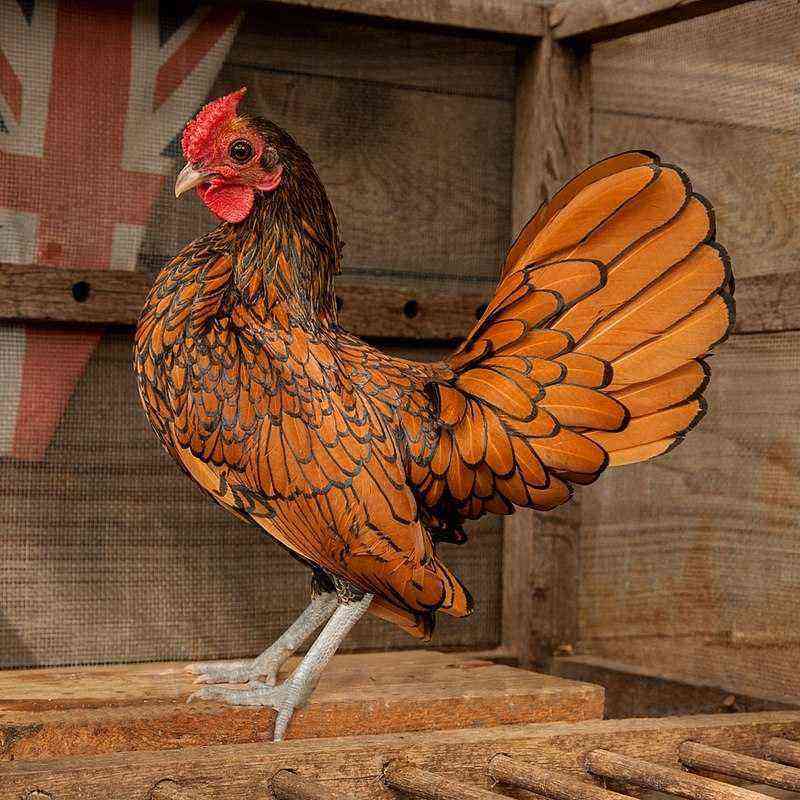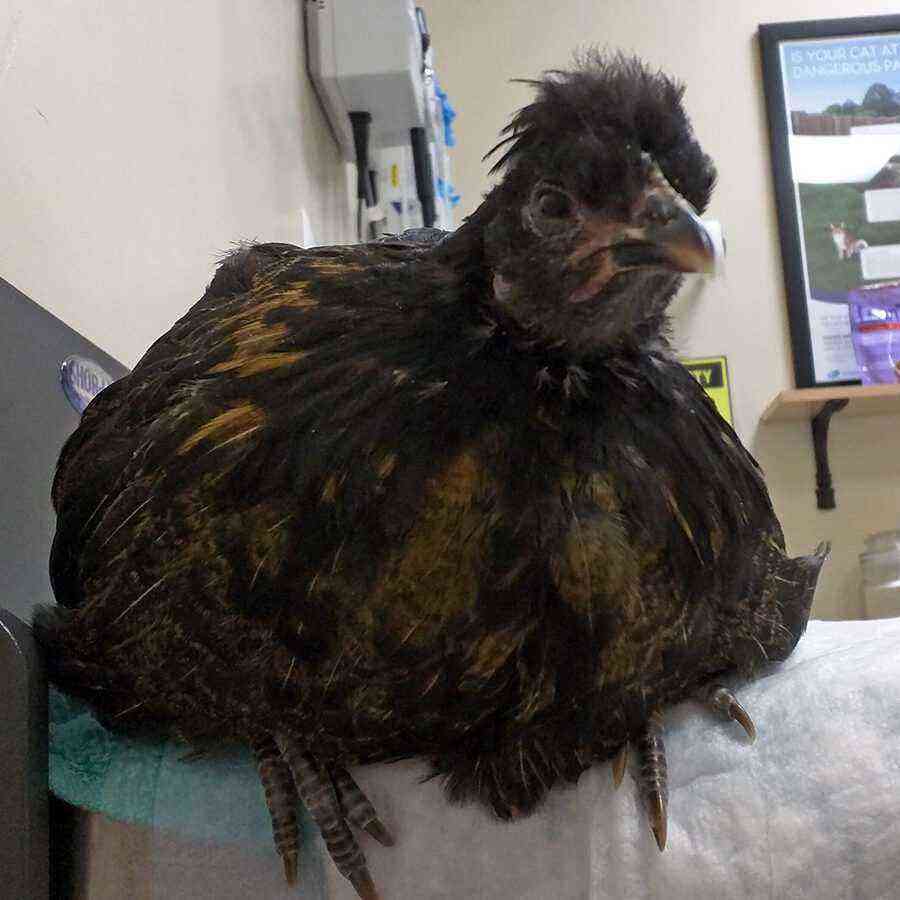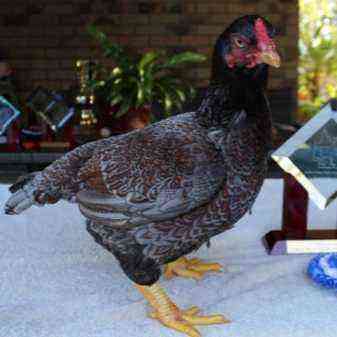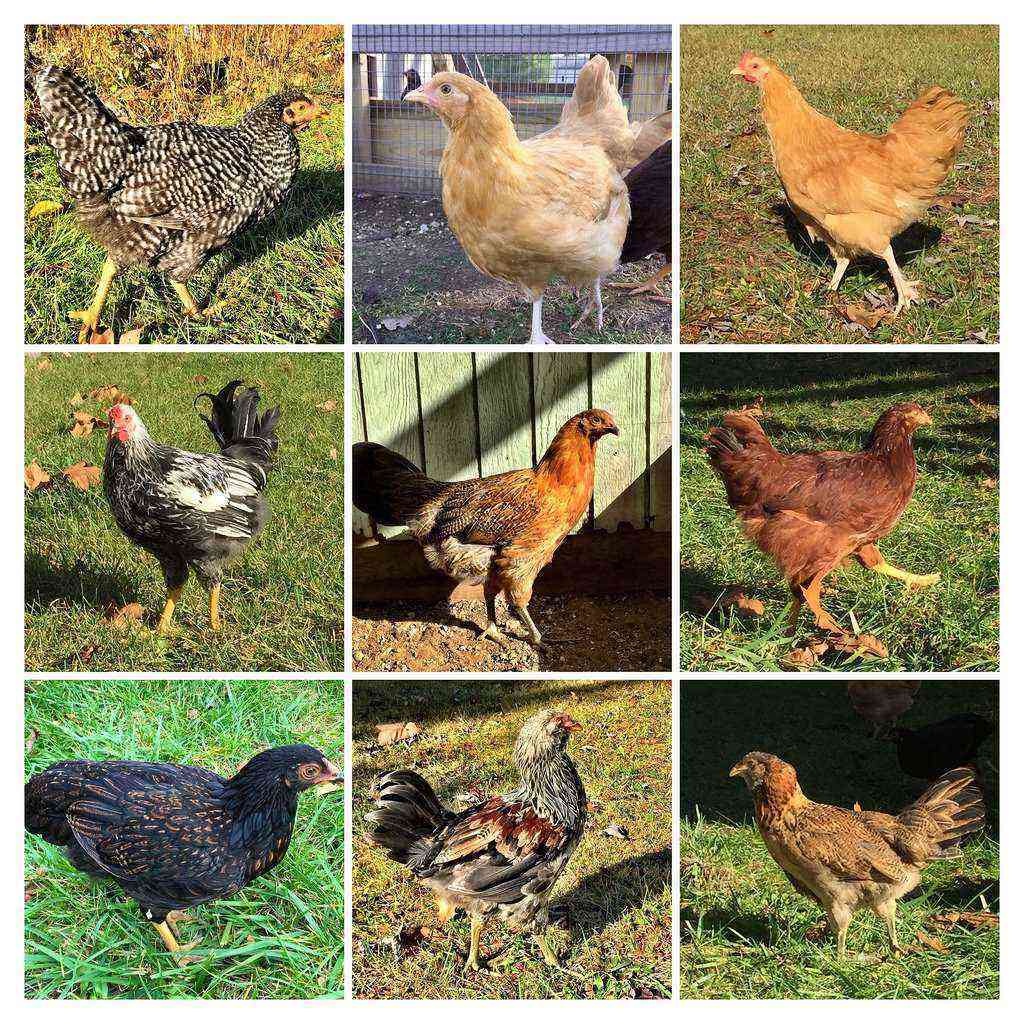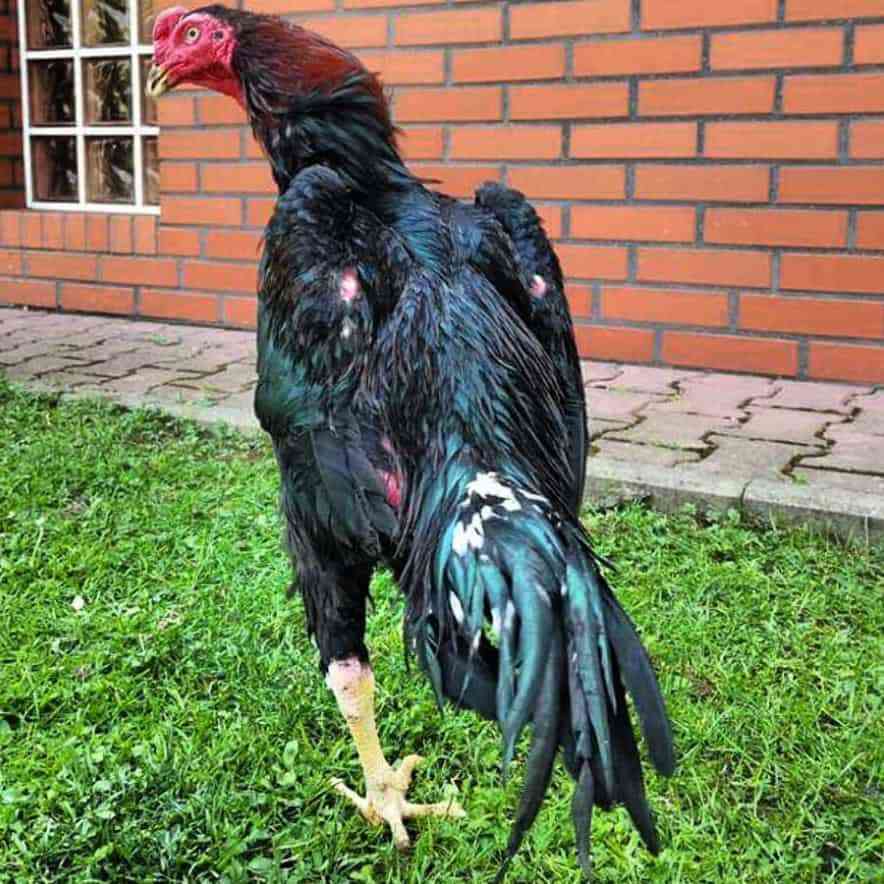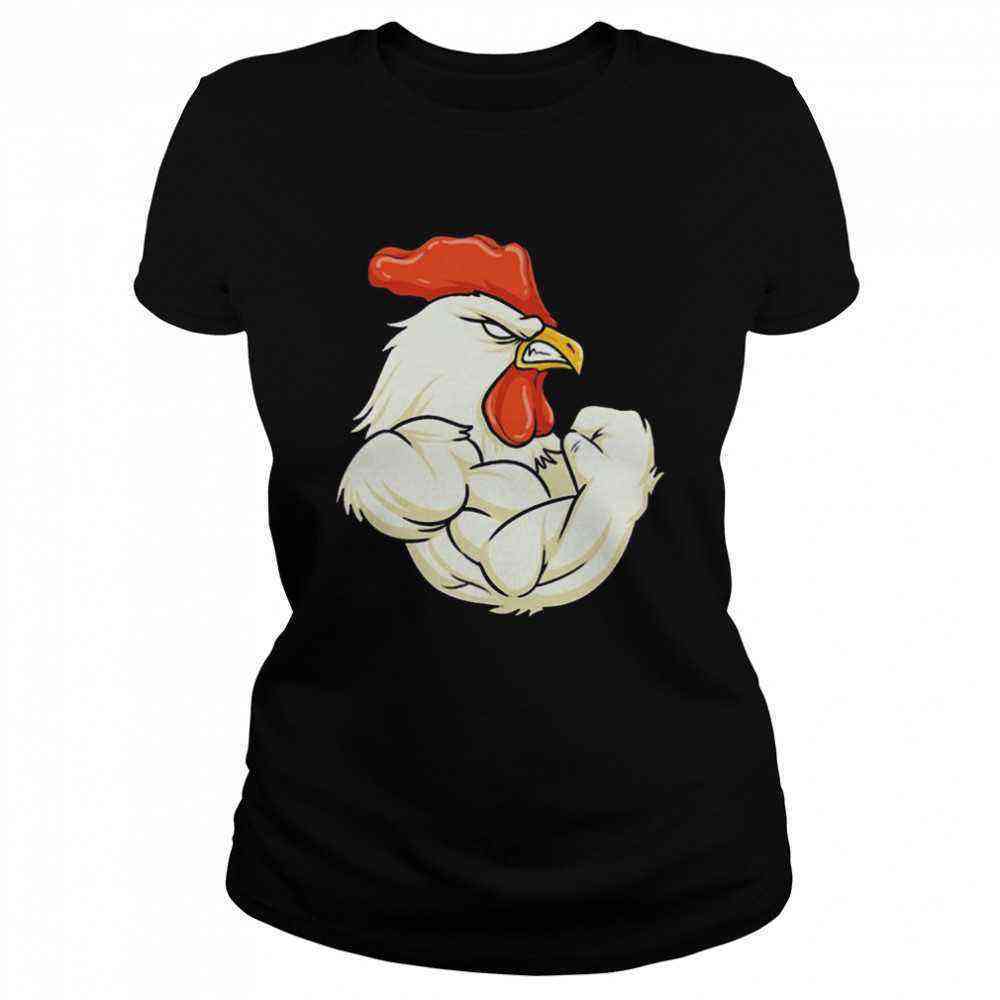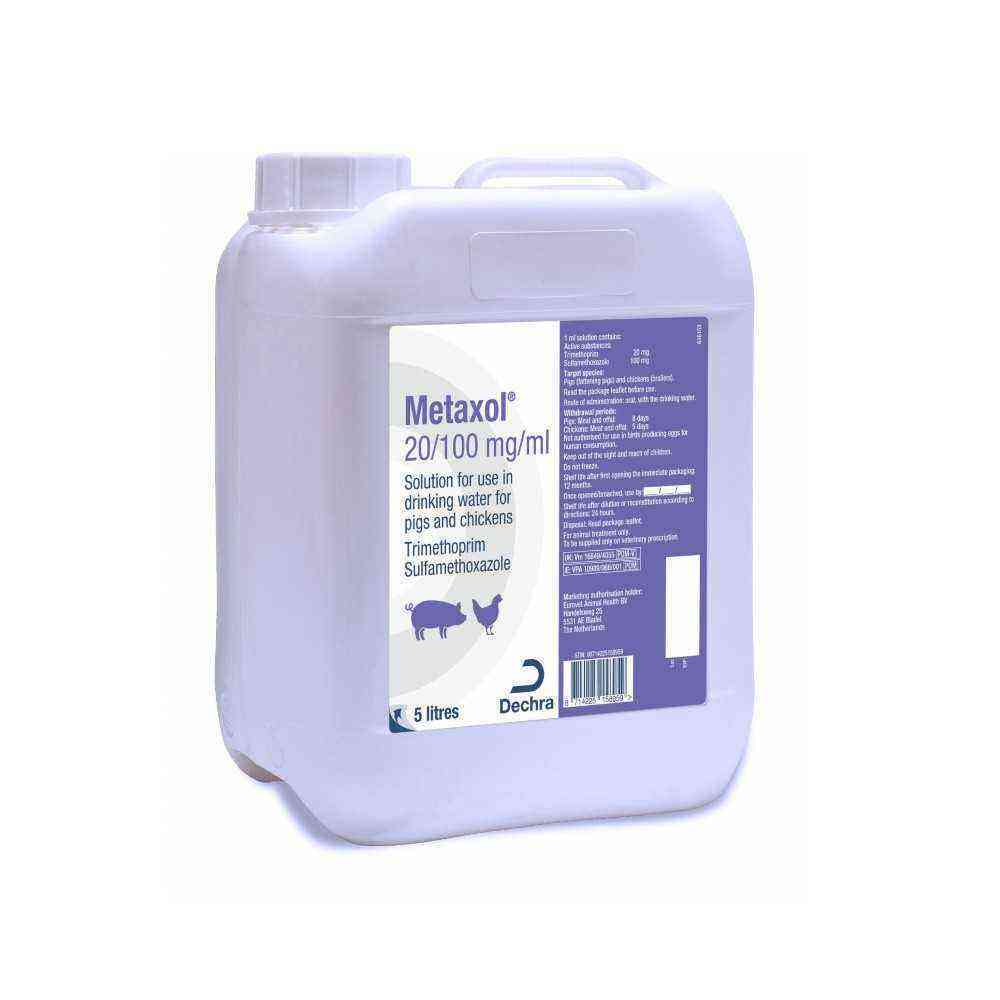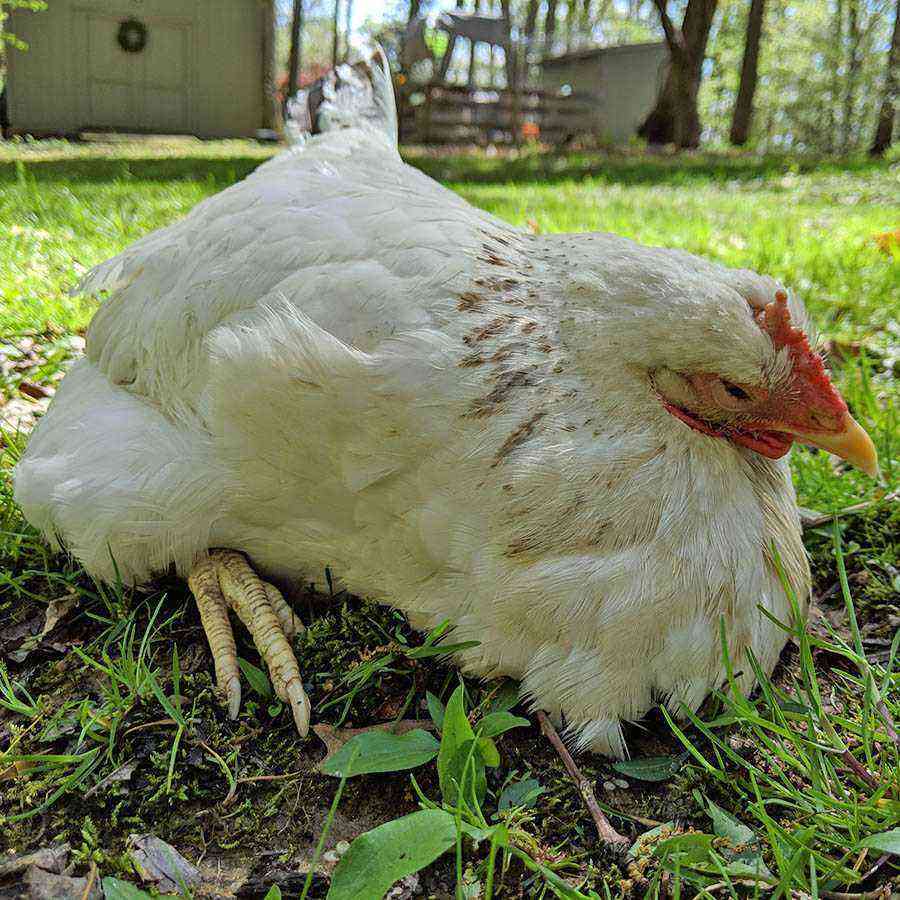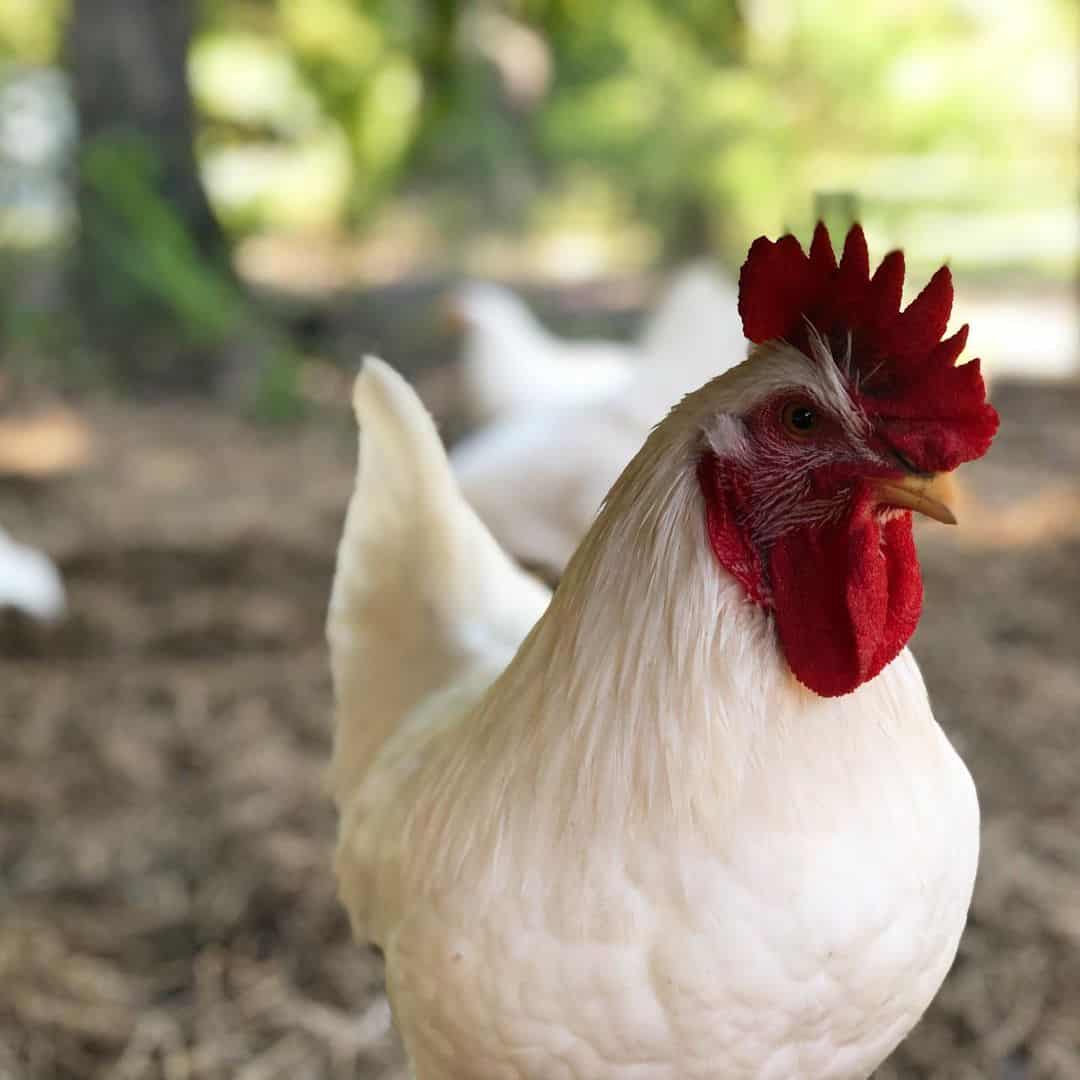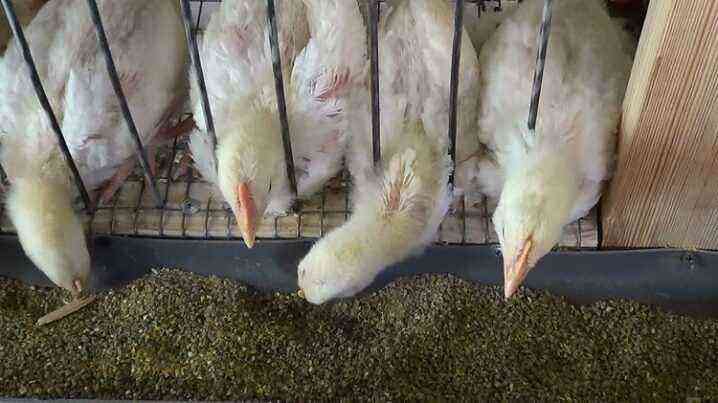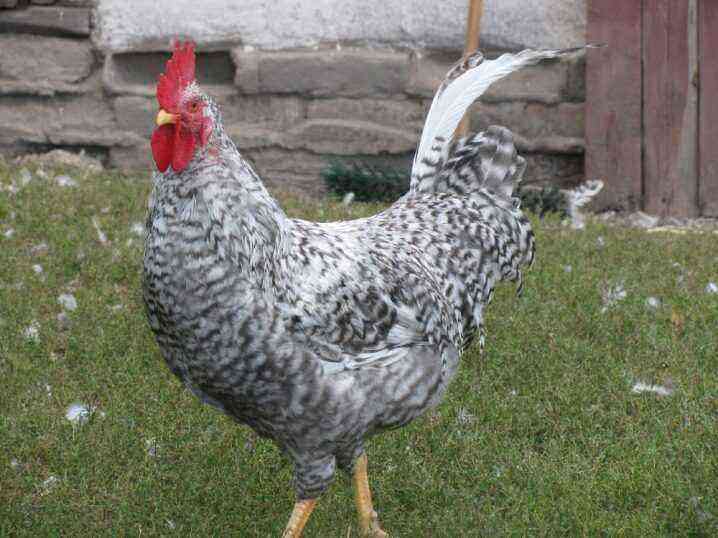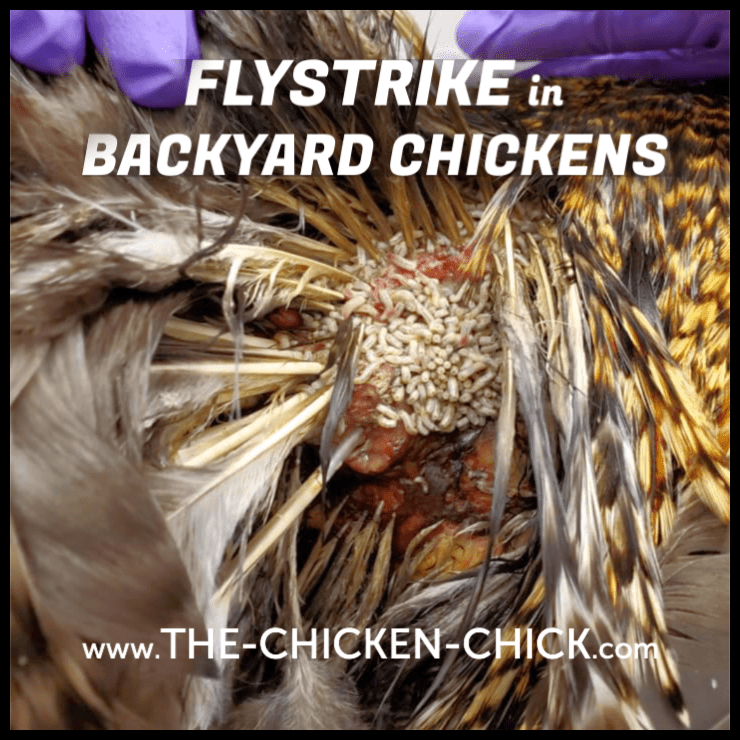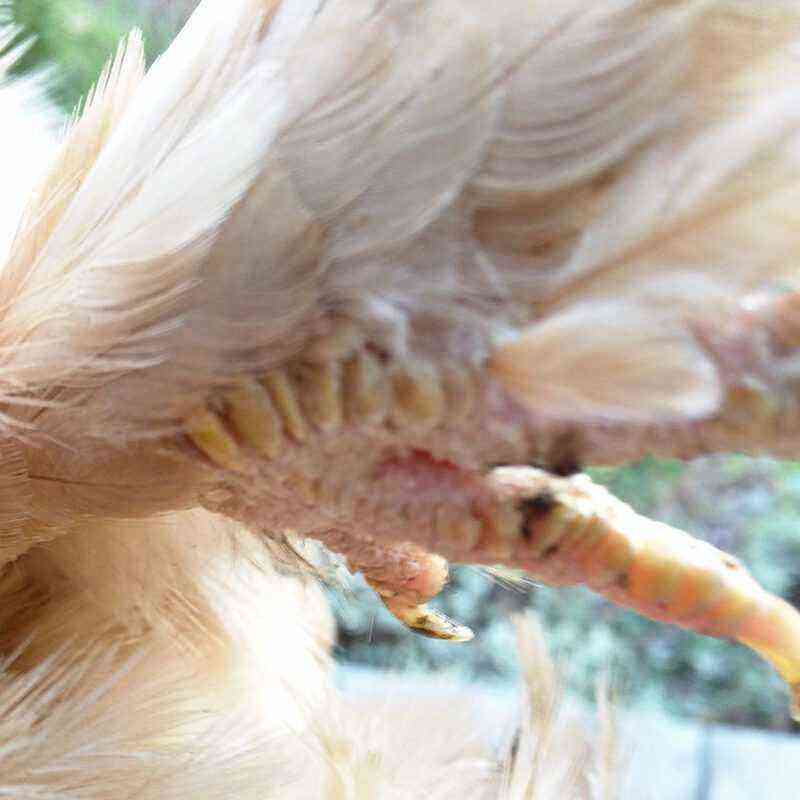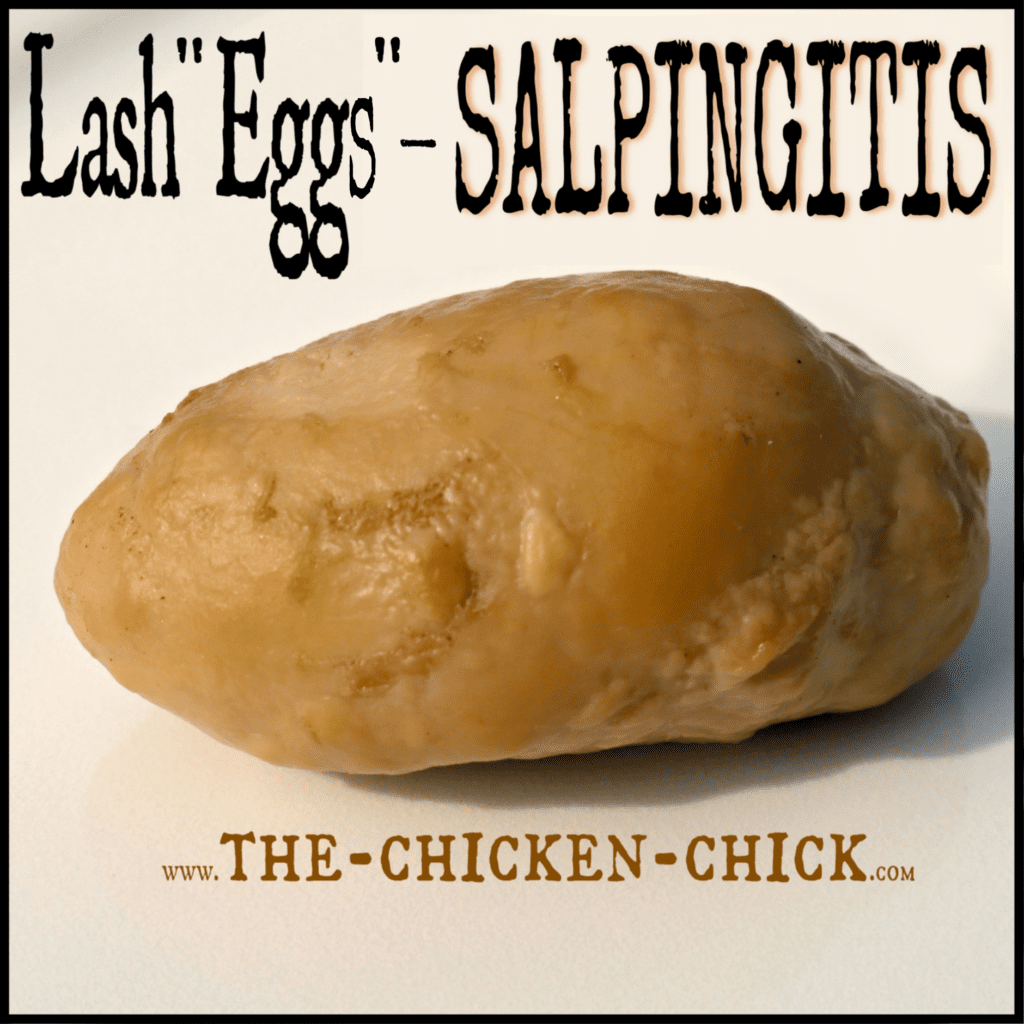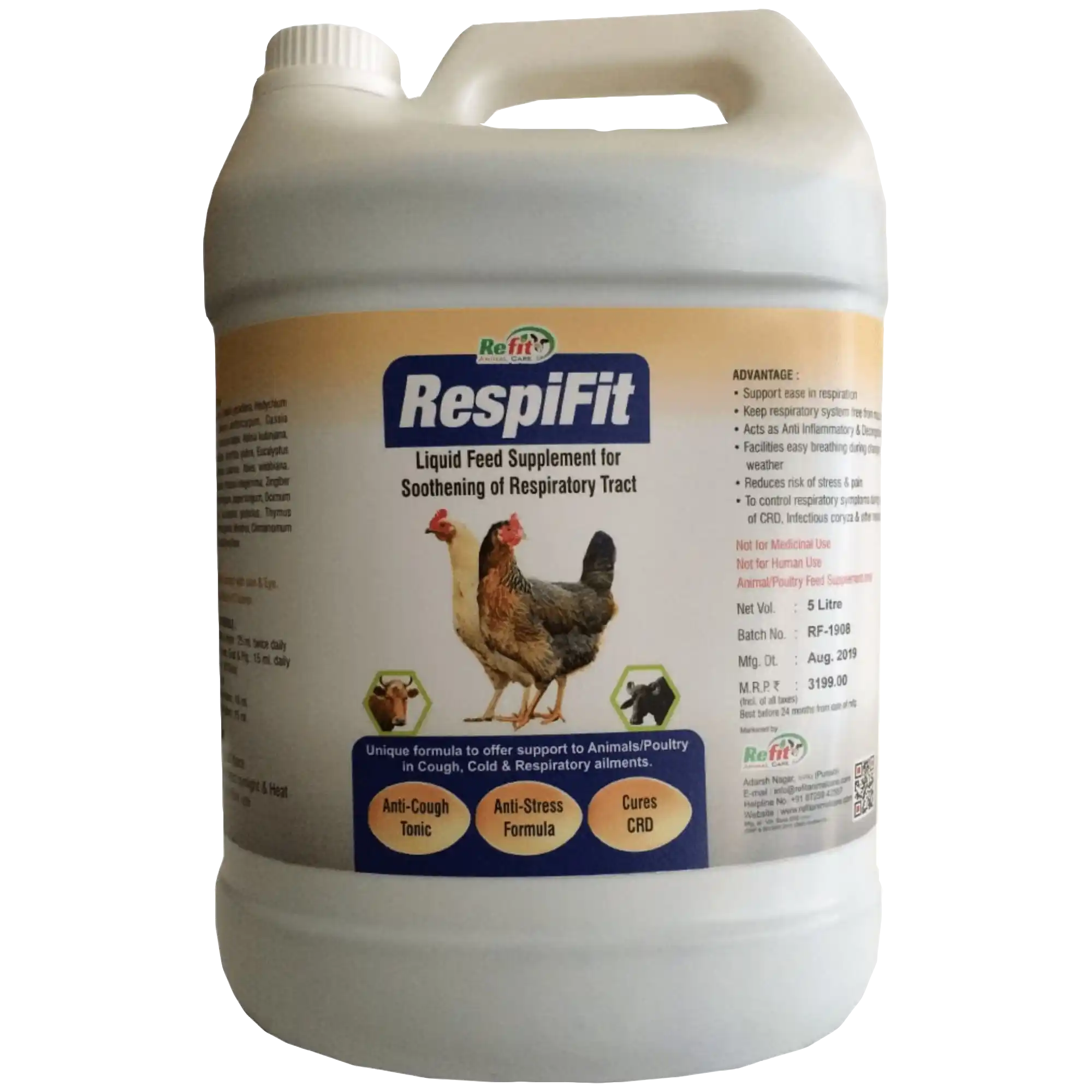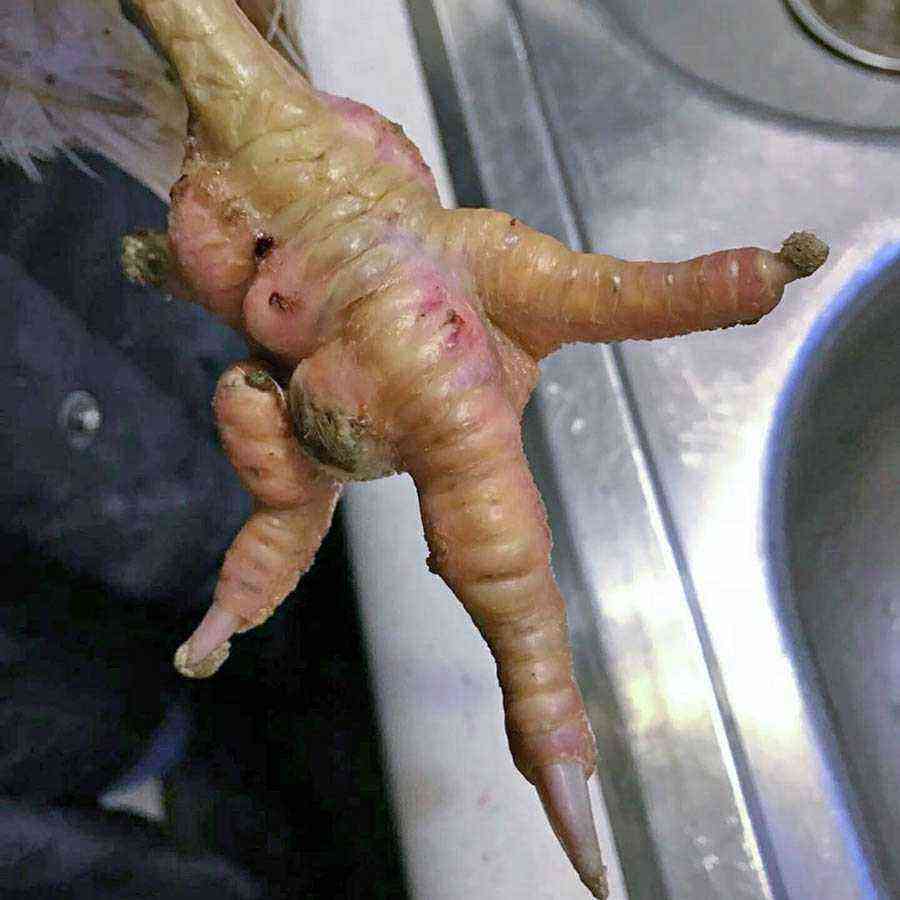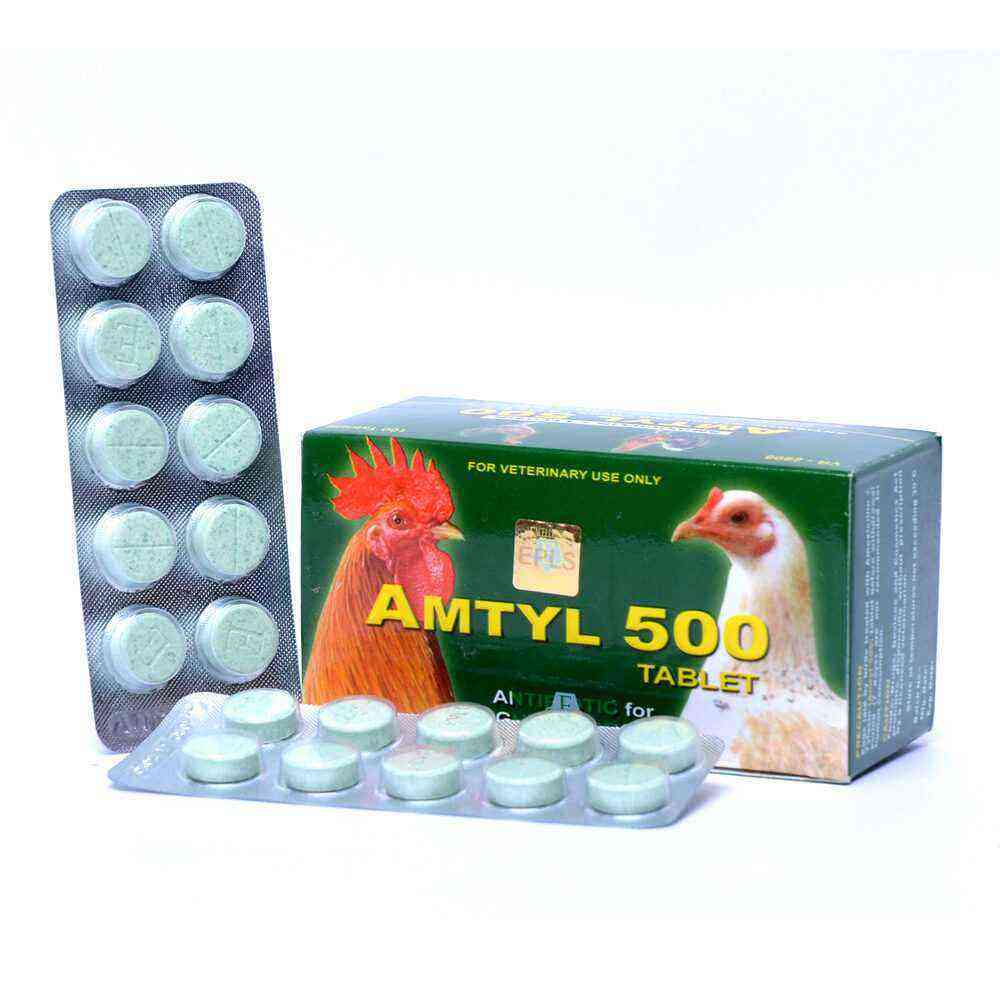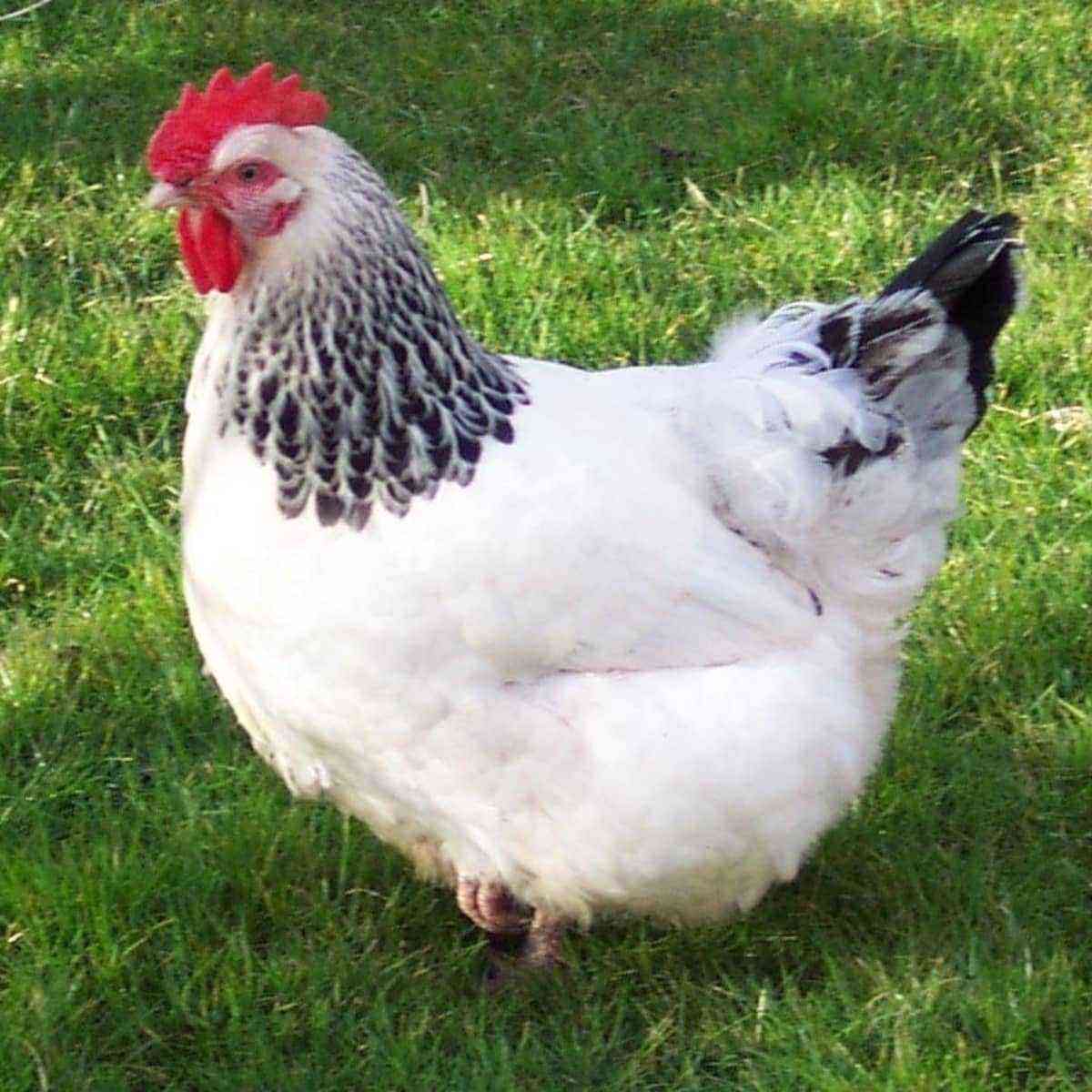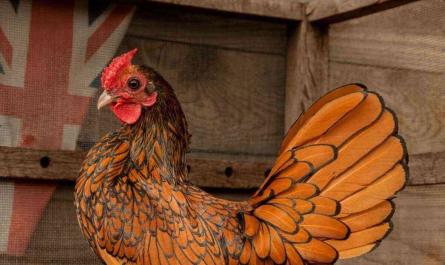Farmers very often breed broiler chickens. This breed of chickens is very profitable to grow. In a short time, you can grow birds weighing 2 kg. “Early maturity” and good taste of meat give broilers fame.
Features, pros and cons
Broiler chickens are a meat category of birds. They are almost always in a horizontal position. They have small feet. The wings are also small. This breed of chickens will adapt to all conditions. It should be noted the advantages of broilers:
- large weight – about 3 kg from a laying hen and up to 5 kg from a cockerel;
- quick weight gain – 60 days after birth, they can be slaughtered (birds do not need to be kept longer than this time, because the taste of meat can change for the worse);
- picky and “soft” disposition;
- tasty meat.
Broilers also have disadvantages.
- Little egg production. You need to be observant of how the birds rush. This is necessary to select the best laying hens that will produce eggs better than the rest.
- A good appetite. These animals are very voracious. In order for them to quickly gain weight, they need to be fed frequently.
- The high cost of feeding birds.
- Difficult keeping of birds – certain requirements for planting in a chicken coop, feeding and care must be observed.
Due to the good appetite of chickens and their inactivity, the chicken coop must be constantly cleaned. It is also necessary to regularly wash the feeders and drinking bowls with laundry soap.
It is important to monitor the health of animals, if necessary, give antibiotics and vitamins. Weak chickens should be kept separately. For this breed, high humidity and temperature fluctuations are unacceptable. In order for the chickens to be more active and vigorous, you need to regularly ventilate the room. In order for broiler chickens to gain body weight faster and develop better, you need to create the necessary conditions for them and a special diet. Before you buy chickens, you need to familiarize yourself with the rules for breeding and keeping them.
Varieties
For industry and home keeping, it is best to purchase well-known breeds of chickens. The best of them are characterized by a rapid set of muscle mass.
Cobb-500
They are distinguished by good precocity. They can be grown both on industrial farms and bred in a household setting. This breed requires almost no maintenance. But in order for them to have a good income, it is necessary to observe all the conditions for their nutrition and maintenance. They can gain a body weight of about 6 kg. An animal can reach such a weight already after 45 her. The survival rate under various conditions is almost 100%. Their plumage is white. Yellowish skin. Characteristic features of the bird:
- chickens have a good appearance;
- they are quite fleshy;
- they have very tasty meat;
- large chest;
A bad characteristic of chickens is weak immunity. They need to be given antibiotics all the time. Productivity depends on the quality and quantity of food.
Ross-308
This type of chicken is universal. They have very tasty meat and average egg production. They are growing fast. In one day, a well-fed chicken can gain about 60 grams of weight. Characteristic features of the cross:
- chickens quickly gain muscle mass – by two months they can weigh about 3 kg;
- chickens have short legs and a large body;
- the chest is full;
- good performance – chickens can produce about 180 eggs per year;
- unpretentiousness to food and conditions of detention.
Hubbard F-15
This breed can be kept in large enterprises or in the household of farmers. They survive well in various environmental conditions. These chickens are unpretentious in care and feeding. Characteristic features of the breed:
- broilers are very precocious – by two months they already weigh about 3 kg (large birds, with good nutrition, reach 8 kg of weight);
- have good egg production – birds can lay up to 200 large eggs per year;
- stable productivity over a long period of time;
- chickens are very large and heavy;
- chicken breast is white in color, soft and dense in texture, the meat is low in calories, excellent in taste;
The bird is very demanding on temperature conditions. In order for her to lay many eggs, she must be fed with high-quality food.
Broiler-61
These birds were obtained by crossing two breeds of chickens. Characteristic features of animals:
- white color:
- big chest and strong legs;
- low productivity;
- fast weight gain – a chick at 1 month already weighs 2,5 kg;
- increased standard of living;
- quiet character;
- the acquisition of a pale shade in meat after slaughter.
Conditions for keeping
Residents of the city who love to eat delicious chicken meat of their own production can raise chickens in their country house in the summer. Growing broilers at home should begin with the purchase of chickens. It is better to choose both hens and roosters. Due to this, chickens can become hens and breed. Buying chicks from the hands of incomprehensible people is not the best option. Experts recommend going to farmers who grow poultry. Chicks should be taken when they are only two weeks old. By this time, they will grow up, and their immune system will get stronger. Because of this, they will be subject to disease and death much less frequently. If you buy a chicken that is less than two weeks old, then you must definitely learn how to properly care for him.
For beginner poultry farmers, you should familiarize yourself with some of the nuances. For example, it is necessary to represent for what purpose they were bought. They are mainly purchased for eggs and meat. Worth buying:
- active chickens with sparkling eyes;
- birds with a soft and unbloated belly;
- with a uniform plumage color;
- chickens whose wings are well pressed to the body.
Acquired chickens must clearly respond to sounds.
To determine the sex of a bird, you need to carefully spread the wing. Males have feathers of the same length, while chickens have different ones. Young chicks may experience stress when moving to a new place. This negatively affects the health and physical condition of the chicken. The risk of various kinds of diseases increases. Before settling in new tenants, it is necessary to prepare the chicken coop well. To do this, it is important to take into account all the needs of the bird that it needs. There are several mandatory requirements that must be met.
- Disinfect the room. The walls must be treated with lime. In some cases, the floor is also covered with lime.
- There should be no drafts in the chicken coop. To avoid their occurrence, cracks must be properly plastered. Openings must be closed or sealed. You do not need to use a rag for this purpose – a bird can simply peck at it.
- The temperature in the room should be at least 25 degrees. If it is too cold, then you need to put a heater and incandescent lamps. If this is not done, then the chicks will quickly lose their mass and will be prone to disease. By the slaughter period, the temperature can be reduced to 20 degrees.
- When the chicks are still very young, the lighting in the room should be bright enough. It will help you gain weight and boost your immune system. After a few weeks, you can gradually reduce the lighting.
- Humidity needs to be controlled. The room must be well ventilated. If there is high humidity, then ammonia will accumulate in the air. This is fraught with a lack of appetite and the appearance of various infections. In some cases, even the lethal outcome of the chicks is possible.
- It is necessary to prepare drinking bowls and feeders for chickens in advance. Provide free access to them.
- Floor covering needs to be laid. It can be sawdust or straw. The coating density should be at least 10 cm. It is necessary to clean the room well and make sure that it is dry and comfortable there.
- When buying chicks, you need to pay attention to their mobility. Chicks that are sedentary and lethargic should be culled immediately.
In the first days of life, it is recommended to keep the chicks in a brooder. It can be placed right in the house. To make it, you will need two large boxes fastened to each other. One will be needed for feeding, and the other for walking the chickens. It is also necessary to build a bedding of straw and put a diaper on it. There can be up to 18 chicks in a brooder. When the chickens grow up, they need to be moved to a larger room. You can make a separate building with a roof. It would be nice to make a greenhouse for them. In cold weather, it will be quite warm there. The disadvantage of this design is that it will be very humid in it, and there will also be no fresh air. It will be necessary to ventilate it often, while avoiding drafts. It’s hard to do this.
You can build an outdoor chicken coop so that the chicks sit on the floor on a warm bedding. Many make a cellular structure and build many tiers in it. An outdoor chicken coop is easier to make. However, it will not be as spacious and free for the chicks as in the cage. In the latter option, much less money is spent on space heating, electricity and ventilation. If the chicks are kept on the floor, it will quickly become dirty. Chicks can pick up dangerous infections much more often. In the floor content, cleaning is necessary more often than in cages.
The cage can be made entirely of mesh. In this case, the floors are recommended to be built from a plastic mesh. The legs of the chickens do not fall through on it. Bird droppings do not stick to it. The grid can be easily washed at any time.
In order to quickly raise chickens from scratch, it is necessary to create appropriate conditions for them, as well as provide them with a complete balanced diet. If it is not planned to leave small chickens for further breeding of broilers, then they need to be grown for no more than 2,5 months. After reaching this age, they stop gaining weight, and they consume food at the same level. In this case, their content will become unprofitable. You need to make sure that the house is not too hot. If the chicks are stuffy, then they will not have an appetite due to the fact that they will drink water in large quantities. Chicks must be kept away from other poultry. They will need special care. And also they should not be kept together with adult chickens in order to avoid the development of all kinds of diseases.
In the summer, when the chickens grow up, they can be let out for a walk. There grows useful grass for them, for example, nettle, dandelion, clover. During the summer, the chickens will grow up and gain strength. At home, chickens are usually not raised for offspring. Their purpose is rapid weight gain. For eggs, there are special breeds of chickens. Broilers almost never lay. The laying of eggs by broilers can lead to various problems – diseases and the inevitable death of offspring. If birds lay eggs, then no more than 2 times a week. This is due to the fact that they are obese.
If you fulfill all the requirements for the care and feeding of chicks, then raising this breed of chickens will be very profitable. You can provide meat for your entire family over the summer.
Feeding rules
In the chicken coop, you need to think about the feeding and watering system. It should be simple enough and not traumatic for the bird. You can make drinking bowls and food utensils in a short time. To make a regular drinker, you need to close a five-liter bottle of water well. Poke a small hole at the bottom of the bottle with a knife. In a deep and wide bowl we put a container with water. The water should flow out to the optimum level in the bowl. So you can get a homemade design for drinking bowls of birds.
You can also build a feeder for food. To do this, a large plastic bottle should be cut into two parts, make a hole at the bottom with a knife. Screw the bottom of the bottle with several screws to the plywood sheet. This is necessary so that the structure does not fall. You can draw up a scheme for feeding chickens. It is suitable for those farmers who do not want to give antibiotics to chickens from birth. For the formation of good immunity in chickens, you need to introduce a complete diet. It should be saturated with amino acids, vitamins and minerals. If the chicken becomes infected, then antibiotics can help him.
Within a week after the chick hatches, it receives the missing trace elements from the yolk sac from the bottom of the belly. On the first day of a chicken’s life, you need to help him absorb the residual yolk inside the body. To do this, you need to add a little glucose or sugar to the drinking bowl with water. Water with sugar will help relieve stress in the chick. If this is not done, then the chicken may die. From day 2 to day 5, you need to give the chicken a complex of vitamins, like Chiktonika or Nutril. From day 6 to day 8, it is necessary to stop taking the drugs for three days, in order to avoid an excess of minerals in the body. From days 9 to 11, antibiotics should be given to the chick to maintain its immunity. Antibiotics should not cause the chick to become accustomed to them soon. Preventive measures in this case will be ineffective. But do not give birds antibiotics for humans. Not all of them can affect birds.
You need to buy medicines at a veterinary pharmacy. You can buy a good and inexpensive drug called Farmazin. From day 12 to day 18, you will need to interrupt the course of antibiotics. From 19 to 21 days, you need to drink a course of vitamins to the chicken, and from 22 to 24 days, you need to take a break after taking vitamin formulations. From 25 to 27 days, it is again recommended to drink a course of antibiotics, after which from 28 to 34 days you need to take a break after taking antibiotics. Next, you need to continue to alternate giving vitamins and antibiotics. Birds should receive vitamin-mineral complexes every two weeks. Broilers can be slaughtered at day 45. Their weight should be approximately 2,5 kg. It is unprofitable to keep chickens longer.
Chickens should eat only special compound feed. It will help make the daily care of the chicks easier. In addition, it is allowed to make wet food. To do this, take 1 kg of dry mix, 0,5 liters of water or broth. This will greatly reduce the cost of food. You can also give food from the table, such as porridge, some vegetables and yeast. This option is ideal for farms with a small number of birds.
Food must be combined. Dry and wet food can be added to the feeder. It is recommended to add a protein concentrate to food – such as BMVD. It contains vitamins and minerals. It can be added to poultry food up to 30% of the total weight of the feed. This feeding option will be very economical. It will well enrich the diet of broilers, will increase the quality of meat and the body’s resistance to various kinds of diseases. You can also save time on preparing food for broilers.
Until the age of two weeks, the chicken must be fed 8 times a day. At this age, the chick eats about 80 grams. During this period, birds need to be given eggs, milk products, such as kefir or cottage cheese. You can make a wet mash of wheat with the addition of dairy products. If the chicks do not have problems with the gastrointestinal tract, then they can be given PKV 6-1 compound feed. However, it has a significant drawback – this food is quite expensive. But it promotes the development of skeletal muscles.
By two weeks, it is necessary to crumble shells, chalk, bone meal into a wet mash. You can give dandelion, nettle and pea greens. For chicks from two weeks to one month, the number of feedings is reduced to 4 times. The amount of food is up to 120 g of feed. During this period, chickens can be given a mixture that consists of corn, millet, cake, greens and fat. The chick is starting to gain its weight well. By the age of one month, it already reaches a mass of 1,5 kg. He can eat any food. At this time, it is recommended to replace small amounts of millet with boiled potatoes. Fish waste about 10 grams is also added.
Yeast must also be mixed into a wet mash. Fresh carrots, pumpkin, fresh cabbage also appear in the diet. Chicks at this moment need protein and calcium for the normal growth of the body.
From the age of one month to slaughter, the chicks are fed 2 times a day. A serving of food should be 180 grams. Ground grains can already be replaced with whole grains. Finishing chicken feed can be made as follows: mix corn, soy, barley, millet and peas. Minerals and nutrients, fats, yeast, vitamin supplements can be added to the diet. This will be useful for chicks of any period of growing up. By slaughter, the bird is no longer gaining weight. She weighs approximately 2,5 kg. Chickens eat almost everything, but some foods still need to be removed from the diet. Birds should not be given expired foods, sausage, lemons, watermelons, melons and their peel, cheese, chocolate, jam and butter. If you give low-quality mash, then the bird will often get sick, lose body weight. If this happens, then the bird needs to urgently drink a course of vitamins and change the feed.
Breeding
In the country or outside the city, you can make a good business for breeding broiler breeds. Many people think that broiler chickens are a separate breed of poultry. But this belief is erroneous. In breeding technology, different breeds of chickens are used, which have high qualities of meat reproduction. For this, the Plymouthrock and Cornish breeds are taken. Pairing them must be done according to the rules. Cornish is definitely worth choosing a masculine gender. From plymouthrock, you need to choose only brood hens. When mating, chicks can be bred that have good meat characteristics. The bird is growing very fast.
The best option would be to keep different types of animals separately. They eat different foods. They have different temperatures. It is not uncommon for adult birds of various breeds to get along with each other. While the chickens have not yet grown up, laying hens can be kept with them. But you need to know that broilers grow very quickly and can soon outweigh them. With large sizes, they will trample them down. To prevent this from happening, it is necessary to settle the birds separately. Chickens that are raised from small young eggs grow faster. However, they are small in size. Good results can be achieved if chicks are raised from large eggs of young chickens.
You can buy small chicks. Day old chicks may well settle down in small containers. For this, cardboard boxes and wooden boxes may be suitable. It would be nice to get more chickens.
Breeding chickens is also possible by laying eggs in an incubator. This will reduce the cost of acquiring young chicks. In order for the chickens to grow up healthy, it is necessary to choose only good eggs for laying in the incubator. They are recommended to be taken from a chicken that is no more than 2 years old. She shouldn’t be in pain either. It is better if the eggs are of medium size, regular shape, the same weight and uniform color. Before removing eggs from hens, before laying them in an incubator, no more than 3 days should pass. The incubation period lasts 21 days. Female broilers are good broilers, but when they incubate masonry, the number of hatched chickens will be much reduced.
Diseases and their prevention
Diseases that occur in birds on the farm can cause enormous damage to business owners. It must be emphasized that small chicks are much more likely to get sick compared to large birds. Farmers need to know all the symptoms of the disease in order to identify it early and cure chickens. The following are the most common diseases of chickens.
- Bronchopneumonia. It can occur due to hypothermia or infection. Chicks’ breath becomes wet and hoarse. There is a discharge of mucus from the nose. The condition of the bird is very lethargic. It is urgent to give antibiotics – penicillin or terramycin.
- Pseudoplague. The bird is coughing. Digestive disorders may occur. The bird refuses to eat. The temperature may rise. The coordination of movements is disturbed.
- Conjunctivitis. The chicken may develop mucous discharge from the nose and mouth. There is indigestion. There is no cure for this disease. It is necessary to destroy all sick birds. The carcasses of such chickens are also not to be eaten.
- Mycoplasmosis. There is shortness of breath, hoarse breathing, the state is very lethargic and weak. Eyelids may swell. The tearing starts. To eliminate this problem, it is necessary to give tylosin, tiamulin.
- Aspergillosis. Convulsions begin. Muscles tremble, the movement of the bird is disturbed. The comb turns blue. The condition of the bird is lethargic and apathetic, breathing may be difficult, frequent sneezing. There is no cure for this disease. It is necessary to destroy all sick birds with the disposal of carcasses.
- Marek’s disease. The nervous system is affected, the legs are paralyzed. The neck and goiter are also paralyzed. The bird has weakness, constrained movements. There is no cure for this disease. It is necessary to destroy all sick birds.
- Salmonellosis. The bird has an indigestion, which is why it refuses to eat. Her condition is weak and drowsy. Swollen eyes, mucus is discharged from the nose. There is hoarse breathing. The limbs are swollen. This leads to the fact that the growth and development of young animals slows down. Furazolidone, streptomycin can be used for treatment.
- Pullorosis. The bird is weak. The condition is inactive, the animal refuses to eat. The body temperature rises. Green or brown diarrhea occurs. The eye shells and comb become blue. Treatment can be with antibiotics such as sulfadimesin.
- Coccidiosis. The bird is in a lethargic condition. She refuses to eat. There is a disorder of the digestive tract with secretions in the form of mucus. It is necessary to use antiparasitic drugs – Baycox, Aprolium, Coccidine, Statil.
- Bird flu. There is a violation of motor function. The bird may fall. Her condition is very depressed. There is no reaction to an external stimulus. The body temperature rises. There is no cure for this disease. It is necessary to destroy sick birds.
- Chickenpox. Birds are afraid of the light. They often get sick with conjunctivitis. The eyelids are very swollen. Pus and mucus are discharged from the eyes. Pimples appear all over the body. Feather quality deteriorates. The bird refuses to feed. There is no cure for chicken pox. It is necessary to destroy all sick birds.
- Helminths in the intestines. To prevent such a disease, it is necessary to regularly clean the room where the birds are.
- Arthritis. The bird has pain in the joints. She starts walking less. A large amount of time the animal sits apart from everyone.
- Ascites. The development of such a disease can occur due to malnutrition and missing greens in the bird’s diet. A large amount of fat begins to accumulate in the abdomen. It becomes difficult for the bird to move.
- Poisoning. It can occur due to the fact that the bird ate bad or stale food.
Any disease is easier to prevent than to cure. To do this, it is necessary to pay due attention to the state of birds in the farm. It is not recommended to treat birds yourself. It is better to contact a professional veterinarian so as not to harm the broilers.
Growing broilers is considered a very profitable occupation. But it will require a lot of attention and a lot of effort. If you follow all the recommendations, then raising chickens will definitely succeed.
Common mistakes
Any farmer with or without experience can make numerous mistakes and missteps that will reflect badly on farm income. There are several mistakes often made by closers.
- Trying to observe the temperature regime in the room, the owner may not notice that the floor in the chicken coop is very cold. This is especially important for those birds that are kept on the floor. The chicks will be deprived of warmth and may be prone to all sorts of diseases. Before placing the chicks, it is necessary to check all floors for cracks.
- It is necessary to check the entire room well and see if there is mold or any kind of fungus. Even if everything looks clean around. Mold in most cases is formed due to dampness and humidity of the room. If moisture appears on the floor, it is necessary to immediately clean it.
- Do not make the lighting very bright. This can lead to bird pecking, cruelty and high mortality of chicks.
- The room must be constantly ventilated. You should not create a steam room. Air must circulate throughout the space so that there is no smell of ammonia.
If you create good conditions for keeping birds and provide them with a balanced and nutritious diet, then the chicken can gain weight and more than it should.
See below for more details.
